|
项 目 |
年龄<70岁组 |
年龄≥70岁组 |
P |
|
(n=199) |
(n=157) |
||
|
身高 |
|
|
|
|
Mean (SD)/cm |
159 (8.10) |
157 (8.55) |
0.100 |
|
Missing [n(%)] |
6 (3.0) |
3 (1.9) |
|
|
体质量 |
|
|
|
|
Mean (SD)/kg |
68.2 (13.5) |
61.5 (10.8) |
4.283e-07 |
|
Missing [n(%)] |
6 (3.0) |
3 (1.9) |
|
|
BMI |
|
|
|
|
Mean (SD)/(kg/m2) |
27.1 (4.69) |
24.9 (3.81) |
3.191e-06 |
|
Missing [n(%)] |
6 (3.0) |
3 (1.9) |
|
|
腰围 |
|
|
|
|
Mean (SD)/cm |
96.3 (11.7) |
92.2 (12.1) |
0.001 |
|
Missing [n(%)] |
6 (3.0) |
3 (1.9) |
|
|
AL |
|
|
|
|
Mean (SD)/mm |
22.7 (0.803) |
22.8 (0.836) |
0.176 |
|
Missing [n(%)] |
0 (0) |
1 (0.6) |
|
|
AC |
|
|
|
|
Mean (SD)/mm3 |
115 (28.9) |
117 (27.5) |
0.412 |
|
RLP |
|
|
|
|
Mean (SD) |
0.207 (0.011) |
0.208 0.011) |
0.365 |
|
Missing [n(%)] |
0 (0) |
1 (0.6) |
|
|
LV |
|
|
|
|
Mean (SD)/ mm |
0.519 (0.260) |
0.484 (0.256) |
0.208 |
|
LT |
|
|
|
|
Mean (SD)/mm |
4.620 (0.292) |
4.690 (0.336) |
0.038 |
|
ACW |
|
|
|
|
Mean (SD)/mm |
11.4 (0.4) |
11.4 (0.4) |
0.923 |
|
AOD500 |
|
|
|
|
Mean (SD)/mm |
0.261 (0.142) |
0.280 (0.152) |
0.226 |
|
BMI = 体质量/身高²; RLP=(ACD+1/2 LT)/AL 式中单位:体质量kg、身高m、ACD mm、LT mm、AL mm BMI= Body Mass/Height2; RLP=(ACD+1/2 LT)/AL Unit in the formula: Body Mass kg, Height m, ACD mm, LT mm, AL mm |
|||
|
|
年龄<70岁组 |
|
年龄≥70岁组 |
|
总体 |
|||
|
Variable |
β(95%CI) |
P |
|
β(95%CI) |
P |
|
β(95%CI) |
P |
|
性别 |
-0.003 1(-0.006 2,0.000 1) |
0.058 9 |
|
-0.002 2(-0.005 8,0.001 4) |
0.222 3 |
|
-0.002 7(-0.005 1,-0.000 4) |
0.023 3 |
|
年龄 |
-0.000 1(-0.000 7,0.000 4) |
0.602 5 |
|
-0.000 4(-0.000 9,0) |
0.057 0 |
|
2.38E-05(-0.000 2,0.000 2) |
0.798 5 |
|
BMI/(kg/m2) |
0.000 2(-0.000 1,0.000 5) |
0.262 0 |
|
7.49E-05(-0.000 4,0.000 5) |
0.754 4 |
|
0.000 1(-0.000 1,0.000 4) |
0.380 3 |
|
腰围/cm |
0.000 2(0,0.000 3) |
0.025 1 |
|
8.54E-05(-6.14E-05,0.000 2) |
0.252 3 |
|
0.000 1(1.43E-05,0.000 2) |
0.024 6 |
|
AL/mm |
-0.000 1(-0.003 0,0.001 0) |
0.333 8 |
|
-0.003 8(-0.005 8,-0.001 7) |
0.000 4 |
|
-0.002 2(-0.003 7,-0.000 8) |
0.002 4 |
|
BMI:身体质量指数 |
|
|||||||
|
|
年龄<70岁组 |
|
年龄≥70岁组 |
|
总体 |
|||
|
Variable |
r |
P |
|
r |
P |
|
r |
P |
|
AC/mm3 |
-0.327 |
2.489e-06 |
|
-0.374 |
1.436e-06 |
|
-0.340 |
4.681e-11 |
|
LV/mm |
0.534 |
4.543e-16 |
|
0.596 |
1.908e-16 |
|
0.549 |
1.940e-29 |
|
ACW/mm |
-0.081 |
0.257 |
|
-0.122 |
0.130 |
|
-0.100 |
0.061 |
|
AOD500/mm |
-0.256 |
2.635e-04 |
|
-0.266 |
7.727e-04 |
|
-0.251 |
1.590e-06 |
|
ARA500/mm2 |
-0.226 |
1.336e-03 |
|
-0.210 |
8.379e-03 |
|
-0.206 |
8.854e-05 |
|
TISA500/mm2 |
-0.239 |
6.636e-04 |
|
-0.219 |
0.006 |
|
-0.218 |
3.278e-05 |
|
TIA500/(°) |
-0.302 |
1.487e-05 |
|
-0.305 |
1.023e-04 |
|
-0.294 |
1.625e-08 |
|
|
年龄<70岁组 |
|
年龄≥70岁组 |
|
总体 |
|||
|
Variable |
β(95%CI) |
P |
|
β(95%CI) |
P |
|
β(95%CI) |
P |
|
性别 |
-0.068 4(-0.107 0,-0.029 9) |
5.8012e-04 |
|
-0.061 2(-0.108 9,-0.013 4) |
0.012 4 |
|
-0.066 1(-0.096 0,-0.036 1) |
1.873 3e-05 |
|
年龄 |
0.006 2(-0.000 7,0.013 1) |
0.077 9 |
|
0.000 4(-0.005 9,0.006 6) |
0.909 3 |
|
0.002 0(-0.000 4,0.004 3) |
0.097 9 |
|
身高/cm |
0.003 0(0.000 6,0.005 4) |
0.013 8 |
|
0.001 8(-0.001 1,0.004 5) |
0.218 3 |
|
0.002 3(0.000 5,0.004 2) |
0.012 5 |
|
BMI/(kg/m2) |
-0.001 3(-0.005 5,0.003 0) |
0.554 7 |
|
-0.002 4(-0.008 8,0.003 9) |
0.452 3 |
|
-0.002 1(-0.005 6,0.001 4) |
0.233 9 |
|
腰围/cm |
-0.000 3(-0.002 0,0.001 4) |
0.708 5 |
|
-0.000 2(-0.002 2,0.001 8) |
0.862 5 |
|
-0.000 4(-0.001 7,0.000 8) |
0.544 1 |
|
AL/mm |
0.084 7(0.063 0,0.106 5) |
7.093 6e-13 |
|
0.058 7(0.031 3,0.086 1) |
3.995 7e-05 |
|
0.073 2(0.056 1,0.090 3) |
9.286 3e-16 |
|
LV/mm |
-0.362 0(-0.419 1,-0.304 9) |
9.041 6e-27 |
|
-0.378 6(-0.451 3,-0.306 0) |
2.968 3e-19 |
|
-0.370 0(-0.414 9,-0.325 2) |
1.123 8e-44 |
|
ACW/mm |
0.117 6(0.068 7,0.166 5) |
4.039 3e-06 |
|
0.081 8(0.019 2,0.144 5) |
0.010 8 |
|
0.102 1(-0.063 9,0.140 8) |
3.596 9e-07 |
|
LT/mm |
-0.124 2(-0.190 1,-0.058 3) |
2.634 8e-04 |
|
-0.120 6(-0.190 1,-0.051 2) |
7.726 7e-04 |
|
-0.117 5(-0.164 8,-0.070 2) |
1.589 7e-06 |
|
RLP |
5.989 4(4.460 5,7.518 4) |
5.541 0e-13 |
|
6.033 5(4.114 4,7.952 7) |
4.644 7e-09 |
|
6.033 0(4.838 1,7.227 8) |
1.158 9e-20 |
|
年龄<70岁组 |
年龄≥70岁组 |
P |
|
|
(n=199) |
(n=157) |
||
|
性别[n(%)] |
|
|
|
|
男 |
104 (52.3) |
90 (57.3) |
0.391 |
|
女 |
95 (47.7) |
67 (42.7) |
|
|
BMI/(kg/m2) |
|
|
|
|
Mean (SD) |
27.1 (4.7) |
24.9 (3.8) |
3.038e-06 |
|
腰围/cm |
|
|
|
|
Mean (SD) |
96.5 (11.8) |
92.0 (12.1) |
0.001 |
|
AL/mm |
|
|
|
|
Mean (SD) |
22.7 (0.8) |
22.8 (0.8) |
0.191 |
|
AC/mm^3 |
|
|
|
|
Mean (SD) |
115 (29) |
117 (28) |
0.412 |
|
LV/mm |
|
|
|
|
Mean (SD) |
0.519 (0.260) |
0.484 (0.256) |
0.208 |
|
LT/mm |
|
|
|
|
Mean (SD) |
4.62 (0.33) |
4.69 (0.34) |
0.038 |
|
RLP |
|
|
|
|
Mean (SD) |
0.226 (0.011) |
0.227 (0.011) |
0.436 |
|
ACW/mm |
|
|
|
|
Mean (SD) |
11.4 (0.4) |
11.4 (0.4) |
0.923 |
|
AOD500/mm |
|
|
|
|
Mean (SD) |
0.261 (0.142) |
0.280 (0.152) |
0.226 |
|
BMI = 体质量/身高²; RLP=(ACD+1/2 LT)/AL。 式中单位:体质量kg、身高m、ACD mm、LT mm、AL mm BMI= Body Mass/Height2: RLP=(ACD+1/2 LT)/AL Unit in the formula: Body Mass kg, Height m, ACD mm, LT mm, AL mm |
|||


点击右上角菜单,浏览器打开下载